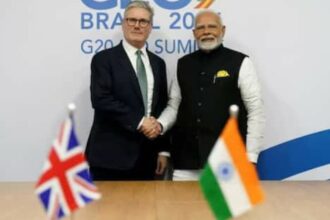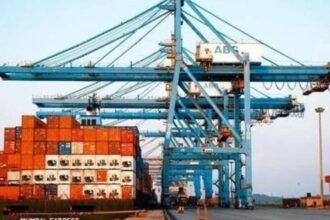For the first time since February 2025, the Reserve Bank of India’s Monetary Policy Committee (MPC) kept key lending rates unchanged following three straight reductions totaling 100 basis points.
The six-member panel, which was chaired by Governor Sanjay Malhotra, unanimously decided to maintain its neutral position and maintain the repo rate at 5.5%. In a show of confidence in India’s economic resilience in the face of global uncertainty. The central bank simultaneously announced bold plans to quicken the Indian Rupee’s internationalization.
No change in Policy Rates
In the midst of persistent global volatility, which includes high US pharmaceutical tariffs, a 50% tariff on Indian shipments, and geopolitical conflicts impacting commodity prices, the MPC decided to halt rate cuts.
The committee decided to wait and see how these developments would affect inflation and domestic growth. The bank rate and the marginal standing facility (MSF) rate stayed at 5.75%, while the standing deposit facility (SDF) and the liquidity adjustment facility (LAF) stayed at 5.25%. Interestingly, India’s current account deficit decreased to a meager 0.2% of GDP this year, indicating that the external sector is doing better.
Two members, Dr. Nagesh Kumar and Prof. Ram Singh, argued for adopting an accommodating stance, even though the majority supported keeping the neutral stance. Although the US and China have experienced strong growth, Governor Malhotra admitted that “the outlook remains clouded amidst elevated policy uncertainty.”
Three pillars of Rupee globalisation
Rupee Globalization’s Three Foundations Building on months of government efforts to position the Indian Rupee as a competitive alternative for international trade and finance, the RBI announced three strategic measures to encourage broader acceptance of the currency in international transactions. First, non-residents of Bhutan, Nepal, and Sri Lanka can now receive rupee-denominated loans from authorized dealer banks for trade-related purposes.
According to data from the Commerce Ministry, 90% of India’s exports to South Asia, which totaled almost $25 billion in 2024–2025, went to these countries, making this move especially noteworthy. It is anticipated that the action will strengthen trade agreements based on rupees with nearby economies.
Second, the RBI intends to create clear reference rates for the currencies of India’s main trading partners, such as the UAE dirham and Indonesian rupiah. This would “minimize the use of crossing currencies to get rates,” which would be advantageous for the rupee and partner currencies, according to Deputy Governor T Rabi Sankar. Only reference rates for the US dollar, euro, Japanese yen, and sterling are currently published by the RBI. The initiative’s goals are to improve rupee usage in invoicing and settlement and increase pricing predictability.
Third, in order to facilitate the settlement of local currency trade, the central bank will expand the acceptable uses of balances held in Special Rupee Vostro Accounts (SRVAs). In addition to the central government securities that have been permitted since August, these balances can now be invested in corporate bonds and commercial papers. The RBI’s dual strategy of aggressively pursuing rupee internationalization and preserving monetary stability through stable rates reflects strategic positioning in the face of global economic uncertainty.
The central bank acknowledges the need to monitor global developments while demonstrating confidence in managing inflation by maintaining rates at their current level. Meanwhile, the rupee globalization initiatives show India’s desire to lessen reliance on currency conversion and make the rupee a reliable, widely used medium for global trade.






